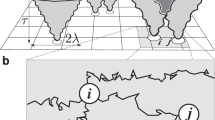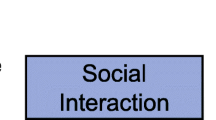Abstract
We extend an abstract agent-based swarming model based on the evolution of neural network controllers, to explore further the emergence of swarming. Our model is grounded in the ecological situation, in which agents can access some information from the environment about the resource location, but through a noisy channel. Swarming critically improves the efficiency of group foraging, by allowing agents to reach resource areas much more easily by correcting individual mistakes in group dynamics. As high levels of noise may make the emergence of collective behavior depend on a critical mass of agents, it is crucial to reach sufficient computing power to allow for the evolution of the whole set of dynamics in simulation. Since simulating neural controllers and information exchanges between agents are computationally intensive, to scale up simulations to model critical masses of individuals, the implementation requires careful optimization. We apply techniques from astrophysics known as treecodes to compute the signal propagation, and efficiently parallelize for multi-core architectures. Our results open up future research on signal-based emergent collective behavior as a valid collective strategy for uninformed search over a domain space.








Similar content being viewed by others
Explore related subjects
Discover the latest articles and news from researchers in related subjects, suggested using machine learning.References
Ballerini M, Cabibbo N, Candelier R, Cavagna A, Cisbani E, Giardina I, Lecomte V, Orlandi A, Parisi G, Procaccini A, Viale M, Zdravkovic V (2008) Interaction ruling animal collective behavior depends on topological rather than metric distance: evidence from a field study. Proc Natl Acad Sci 105(4):1232–1237
Barnes J, Hut P (1986) A hierarchical o(n log n) force-calculation algorithm. Nature 324:446–449
Blackston D, Suel T (1997) Highly portable and efficient implementations of parallel adaptive n-body methods. In: In SC’97 :1–20
Board OAR (2013) OpenMP Application Program Interface, Version 4.0. http://www.openmp.org/mp-documents/OpenMP4.0.0.pdf
Budrene EO, Berg HC et al (1991) Complex patterns formed by motile cells of Escherichia coli. Nature 349(6310):630–633
Coole J, Wernsing J, Stitt G (2009) A traversal cache framework for fpga acceleration of pointer data structures: A case study on barnes-hut n-body simulation. In: Reconfigurable Computing and FPGAs, 2009. ReConFig ’09. International Conference on, pp 143–148
Couzin ID (2009) Collective cognition in animal groups. Trends Cogn Sci 13(1):36–43
Cucker F, Huepe C (2008) Flocking with informed agents. Math Action 1(1):1–25
Czirók A, Barabási AL, Vicsek T (1997) Collective motion of self-propelled particles: kinetic phase transition in one dimension. arXiv preprint. arXiv:9712154
Eberhart RC, Kennedy J (1995) A new optimizer using particle swarm theory. In: Proceedings of the sixth international symposium on micro machine and human science, vol 1. New York, NY, pp 39–43
Hamada T, Yokota R, Nitadori K, Narumi T, Yasuoka K, Taiji M (2009) 42 tflops hierarchical n-body simulations on gpus with applications in both astrophysics and turbulence. In: High Performance Computing Networking, Storage and Analysis, Proceedings of the Conference on, pp. 1–12. doi:10.1145/1654059.1654123
Hartman C, Benes B (2006) Autonomous boids. Comput Animat Virtual Worlds 17(3–4):199–206
Marwell G, Oliver P (1993) The critical mass in collective action. Cambridge University Press, New York
Mataric MJ (1992) Integration of representation into goal-driven behavior-based robots. IEEE Trans Rob Autom 8(3):304–312
Mussi, L., Daolio, F., Cagnoni, S.: Evaluation of parallel particle swarm optimization algorithms within the cuda architecture. Inf Sci 181(20):4642–4657 (2011) (Special Issue on Interpretable Fuzzy Systems)
Oliver PE, Marwell G (2001) Whatever happened to critical mass theory? A retrospective and assessment. Sociol Theory 19(3):292–311
Parrish JK, Edelstein-Keshet L (1999) Complexity, pattern, and evolutionary trade-offs in animal aggregation. Science 284(5411):99–101
Partridge BL (1982) The structure and function of fish schools. Sci Am 246(6):114–123
Pimenta L, Pereira G, Michael N, Mesquita R, Bosque M, Chaimowicz L, Kumar V (2013) Swarm coordination based on smoothed particle hydrodynamics technique. IEEE Trans Robot 29(2):383–399
Reynolds CW (1987) Flocks, herds and schools: a distributed behavioral model. In: ACM SIGGRAPH Computer Graphics, vol 1. ACM, pp 25–34
Shimoyama N, Sugawara K, Mizuguchi T, Hayakawa Y, Sano M (1996) Collective motion in a system of motile elements. Phys Rev Lett 76(20):3870
Silva ARD, Lages WS, Chaimowicz L (2010) Boids that see: using self-occlusion for simulating large groups on gpus. Comput Entertain 7(4):51:1–51:20
Su H, Wang X, Lin Z (2009) Flocking of multi-agents with a virtual leader. IEEE Trans Autom Control 54(2):293–307
Witkowski O, Ikegami T (2014) Asynchronous evolution: emergence of signal-based swarming. In: Proceedings of the Fourteenth International Conference on the Simulation and Synthesis of Living Systems (Artificial Life 14) vol 14, pp 302–309
Yokoi H, Yu W, Hakura J (1999) Morpho-functional machine: design of an amoebae model based on the vibrating potential method. Rob Auton Syst 28(2–3):217–236
Yokoi H, Yu W, Pfeifer R (2003) Morpho-rate: a macroscopic evaluation and analysis of the morpho-functional machine. In: Proceedings of the IEEE International Symposium on Computational Intelligence in Robotics and Automation: Computational Intelligence in Robotics and Automation for the New Millennium, CIRA 2003, Kobe, Japan, July 16–20, 2003, pp 788–793
Yu W, Chen G, Cao M (2010) Distributed leader-follower flocking control for multi-agent dynamical systems with time-varying velocities. Syst Control Lett 59(9):543–552
Acknowledgments
This paper was partially supported by a Grant-in-Aid for Scientific Research on Innovative Areas (Research Project Number: 15H01612). This paper was partially supported by JST, CREST (Research Area: Advanced Core Technologies for Big Data Integration).
Author information
Authors and Affiliations
Corresponding author
Additional information
This work was presented in part at the 1st International Symposium on Swarm Behavior and Bio-Inspired Robotics, Kyoto, Japan, October 28–30, 2015.
About this article
Cite this article
Drozd, A., Witkowski, O., Matsuoka, S. et al. Critical mass in the emergence of collective intelligence: a parallelized simulation of swarms in noisy environments. Artif Life Robotics 21, 317–323 (2016). https://doi.org/10.1007/s10015-016-0303-8
Received:
Accepted:
Published:
Issue Date:
DOI: https://doi.org/10.1007/s10015-016-0303-8




